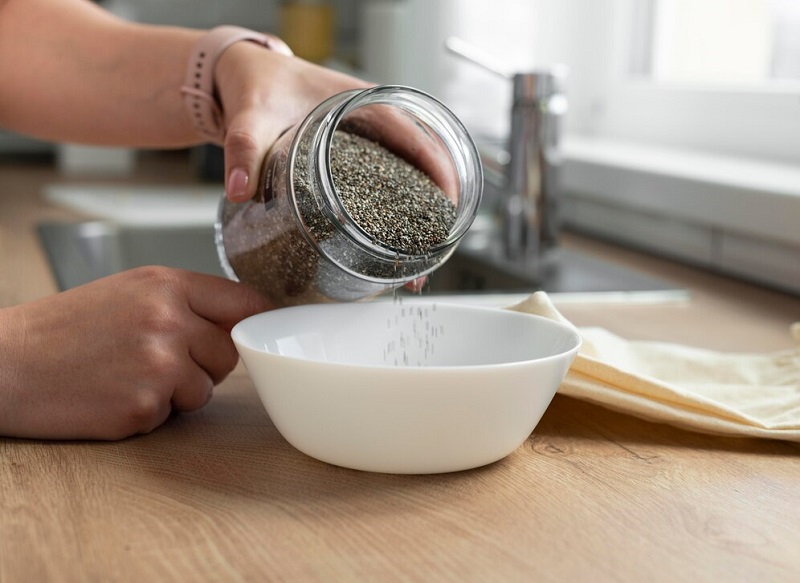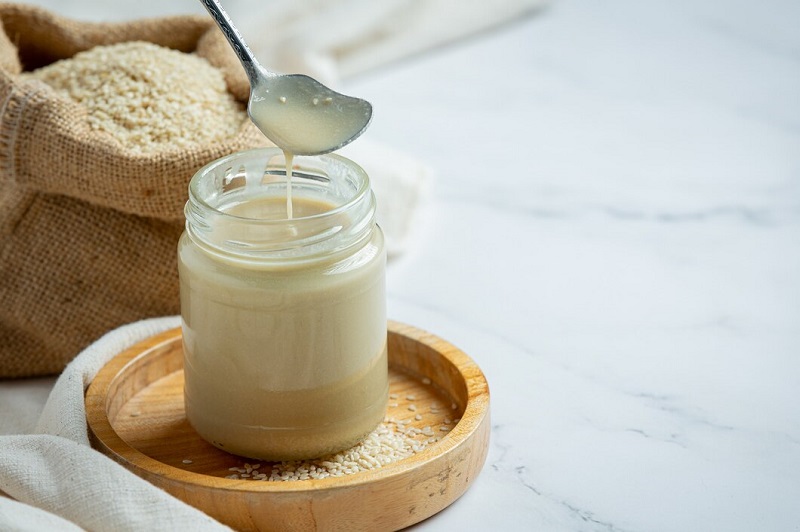In a world where dietary preferences diversify, the quest for nutritious and palatable plant-based alternatives to traditional dairy has led to the spotlight falling on sesame seed milk. This versatile milk substitute not only offers a creamy texture but also packs a punch in terms of nutritional value. From its historical significance to its contemporary culinary applications, seed milk emerges as a powerhouse that deserves exploration and appreciation. In this comprehensive guide, we’ll delve into the realm of seed milk, unveiling its nutritional prowess, health benefits, ways to prepare it at home, culinary uses, and considerations for those curious to embrace this wholesome beverage.
Understanding Sesame Seed Milk
What is Sesame Seed Milk?
Sesame seed milk, derived from sesame seeds, stands out as a lesser-known yet nutrient-rich plant-based milk alternative. The process involves blending soaked sesame seeds with water, resulting in a creamy, subtly nutty-flavored beverage. Its origins trace back to ancient civilizations where sesame seeds were highly revered for their nutritional significance and medicinal properties.
Nutritional Profile
Sesame seeds are nutritional powerhouses packed with essential nutrients. They boast high levels of calcium, magnesium, iron, and zinc, contributing to bone health, immune support, and overall wellness. Additionally, these seeds are abundant in antioxidants like lignans, aiding in combating oxidative stress and promoting heart health. Comparing seed milk to other plant-based alternatives reveals its unique composition, making it a compelling choice for those seeking a diverse nutrient profile in their beverages.
Health Benefits of Sesame Seed Milk
The consumption of sesame seed milk offers a myriad of health advantages. Its rich nutrient content, particularly calcium and magnesium, contributes significantly to maintaining bone density and overall bone health. Moreover, the presence of unsaturated fats supports heart health by regulating cholesterol levels and reducing the risk of cardiovascular ailments.
Read More: Discover the Delicious and Nutritious Elmhurst Pistachio Milk
Potential Health Impacts
Beyond its nutritional profile, seed milk can positively impact various bodily functions. Its fiber content aids in digestion and promotes a healthy metabolism. Additionally, the antioxidants present in sesame seeds play a vital role in reducing inflammation and supporting overall well-being.
Link: Sesame Seeds and Their Health Benefits
How to Make Sesame Seed Milk at Home
Ingredients and Tools Required
Making sesame seed milk at home requires minimal ingredients: raw sesame seeds, water, a high-speed blender, a fine-mesh strainer or nut milk bag, and a storage container. Opt for high-quality, organic sesame seeds for the best flavor and nutritional value.
Step-by-Step Preparation Guide
- Soaking: Begin by soaking the sesame seeds in water for a few hours or overnight. This process helps soften the seeds, making it easier to blend and extract nutrients.
- Rinsing and Blending: After soaking, rinse the seeds thoroughly and drain. Add the soaked sesame seeds and fresh water to the blender. Use a ratio of approximately 1 cup of seeds to 4 cups of water for a creamy consistency.
- Blending: Blend the mixture on high speed for 1-2 minutes until smooth and creamy.
- Straining: Place a fine-mesh strainer or nut milk bag over a bowl or jug and pour the blended mixture through it. Gently squeeze or press the bag to extract all the milk.
- Storing: Transfer the strained sesame seed milk into a clean container and refrigerate. Consume within 3-4 days for the best flavor and freshness.

Tips for Straining and Flavor Enhancements
To achieve a smoother consistency, double-strain the milk or use a cheesecloth for an extra-fine texture. Additionally, for added flavor variations, consider infusing the milk with a touch of vanilla extract, a dash of cinnamon, or a sweetener like maple syrup or dates.
Culinary Uses and Incorporation into Diet
Cooking and Baking Applications
Sesame seed milk’s mild, nutty taste makes it a versatile ingredient in various recipes. It can be used as a dairy substitute in baked goods, such as muffins, pancakes, or bread, providing a unique flavor and moisture to the final product.
Beverage and Smoothie Recipes
Incorporate sesame seed milk into your daily routine by using it as a base for smoothies or beverages. Combine it with fruits, greens, and other ingredients for a nutritious and flavorful drink packed with essential nutrients.
Usage in Savory Dishes
Explore the savory side of sesame seed milk by incorporating it into soups, sauces, or creamy dressings. Its subtle nutty flavor can enhance the taste profile of dishes, offering a delightful twist.
Sesame Seed Milk: Allergies and Considerations
Allergies and Sensitivities
While sesame seed milk is a nutritious option, individuals with sesame seed allergies should exercise caution. Allergic reactions to sesame seeds can range from mild to severe, so it’s crucial to consult a healthcare professional if allergic concerns exist.
Possible Side Effects and Precautions
Consuming sesame seed milk in moderation is advisable. Excessive intake may lead to adverse effects, especially for individuals on specific medications or with existing health conditions. It’s prudent to be mindful of one’s intake and seek guidance if uncertain.

Buying Guide and Commercial Options
Available Brands in the Market
Several brands offer sesame seed milk as part of their plant-based milk product lines. Brands like “Sesamaise” and “Sesamilk Co.” provide ready-to-use sesame seed milk options, often available in health food stores, supermarkets, or online retailers.
Factors to Consider When Purchasing
When selecting commercial sesame seed milk, consider factors such as:
- Ingredient Quality: Opt for products made with organic sesame seeds and minimal additives.
- Unsweetened Varieties: Choose unsweetened versions to control sugar intake.
- Fortification: Some brands fortify their sesame seed milk with additional nutrients like calcium or vitamin D.
Sustainability and Ethical Practices
Exploring brands that prioritize sustainable sourcing practices, environmentally friendly packaging, and fair trade principles can align with ethical consumption values. Researching a brand’s values and practices before purchase can help support ethical and sustainable businesses.
Conclusion
Sesame seed milk emerges as a nutrient-dense, versatile dairy alternative with a rich nutritional profile and various culinary applications. Whether homemade or store-bought, its health benefits, easy preparation, and adaptability in recipes make it an appealing choice for those seeking plant-based alternatives. Embrace the goodness of sesame seed milk to enhance your diet and savor the unique flavors it adds to your favorite dishes.
Frequently Asked Questions (FAQs) About Sesame Seed Milk
While sesame seeds are not tree nuts, they belong to a different botanical family. Individuals with nut allergies should be cautious and consult with a healthcare professional before consuming sesame seed milk to avoid potential allergic reactions.
Yes, sesame seed milk can be used as a substitute for dairy milk in various recipes, including baking, cooking, and beverages. However, its slightly nutty flavor may impart a distinct taste to the final dish, so adjustments to seasoning or flavors might be necessary.
Homemade sesame seed milk can typically be stored in the refrigerator for 3-4 days. Shake well before use, as natural separation may occur. Discard if there are any signs of spoilage, such as an off smell or taste.



